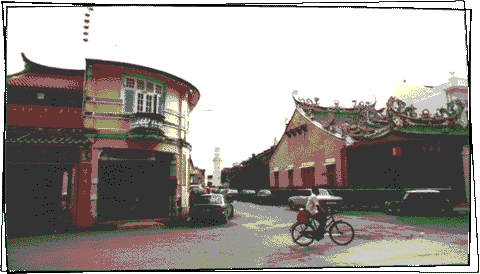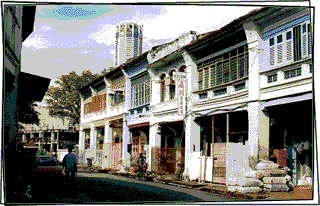|
|
|
|
|
|
 |
 |

|
|
|
|
As yet no evidence of Armenian activity has been found in connection with Armenian Street. The Armenians in fact worshipped at St. Gregorey's at Bishop Street, formerly located between King Street and Penang Street.
The Armenian Church of Penang was founded in 1822, more than a decade before the one in Singapore. In 1937, the church land was sold and the graves were transferred to a mass grave in the Western Road cemetery. A prominent Armenian clan was the family of Arratoon Anthony. The Anthonys were among the Armenian diaspora that settled in Shiraz in Persia, and then in Bombay and Calcutta before coming to Penang. But by far the most famous Armenians in the region were the Sarkies brothers who made their mark as hoteliers of the Eastern & Oriental in Penang and of the Raffles in Singapore. |
| At the same time, the Hokkien-dominated secret society called Khian Teik set up its base at the Tua Pek Kong Temple in Armenian Street.
The Khian Teik allied itself with the Red Flag secret society - two chief of the latter were Syed Mohamed Alatas and Che Long who lived in Armenian Street. The whole area intensively built with institutional bases surrounded by the member's houses, was turn into Khian Teik Red Flag Stronghold. During the Penang Riots of 1867, the Khian Teik Red-Flag alliance fought with the Ghee Hin - White Flag alliance for control of Georgetown. Armenian Street was one of the centres of fighting, where Europeans volunteer police and their sepoys had to erect stockades. The entire town was laid siege for ten days, while reinforcements for both sides came from as far as Province Wellesley and Phuket. Over the next few decades, smaller clashes continued to occur, until secret societies were finally suppressed in 1890. By that time, the Khian Teik had asserted their control, which allowed the Hokkien traders to emerge as the dominent force in Penang. |

|
|
|
 |
||
|
|
|
|
|
|
|
|
|
|